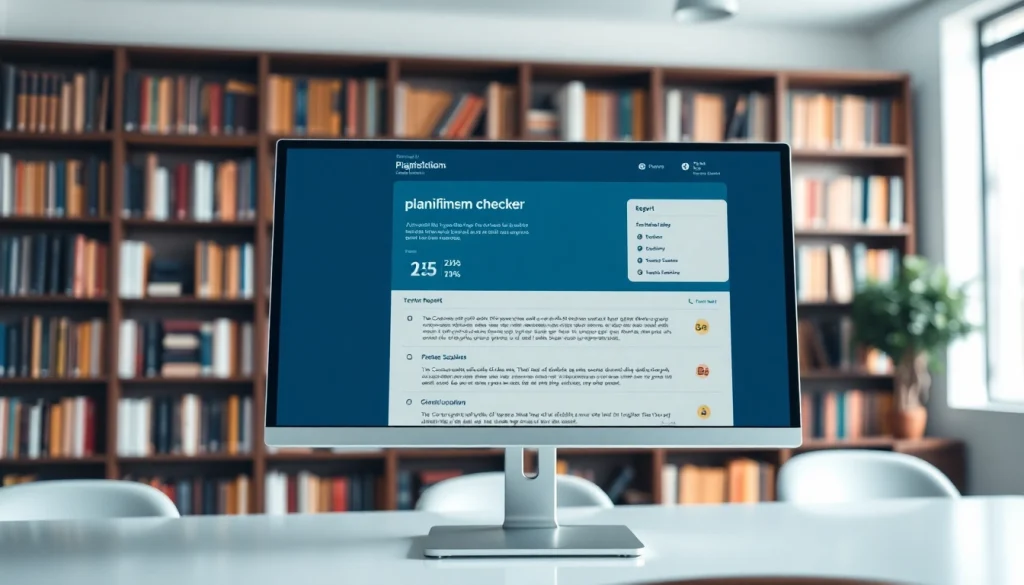Die besten kosmetikstühle elektrisch für Ihr Kosmetikstudio
Einführung in kosmetikstühle elektrisch Elektrische Kosmetikstühle sind ein unverzichtbares Möbelstück für jedes professionelle Kosmetikstudio. Sie kombinieren eine Vielzahl von Funktionen mit modernem Design, was sowohl für die Benutzerfreundlichkeit als auch für die Kundenerfahrung entscheidend ist. Bei der Auswahl eines richtigen Modells sind verschiedene Aspekte zu beachten, die sicherstellen, dass die Investition langfristig wertvoll ist. kosmetikstühle elektrisch bieten nicht nur Komfort, sondern auch Flexibilität, die den vielfältigen Anforderungen in einem Kosmetikstudio gerecht werden. Was sind elektrische Kosmetikstühle? Elektrische Kosmetikstühle sind spezialisierte Möbel, die für kosmetische Behandlungen und Massagen konzipiert sind. Sie sind mit Elektromotoren ausgestattet, die eine Höhenverstellung und in vielen Fällen auch klappbare oder verstellbare Teile ermöglichen. Diese Stühle erleichtern den Fachkräften die Arbeit, da sie die Position der Klienten einfach anpassen können, ohne selbst umständliche manuelle Einstellungen vornehmen zu müssen. Ein qualitativ hochwertiger elektrischer Kosmetikstuhl bietet zudem Ergonomie und Komfort, sowohl für den Benutzer als auch für den Klienten. Vorteile der Nutzung von kosmetikstühlen elektrisch Bequeme Verstellbarkeit: Die einfache Anpassung an verschiedene Körpergrößen und Behandlungstypen sorgt sofort für eine bessere Klientenerfahrung. Ergonomie: Diese Stühle sind so konzipiert, dass sie Rückenproblemen bei den Behandlern vorbeugen, was besonders wichtig ist, wenn man viele Stunden im Studio arbeitet. Moderne Funktionen: Oft enthalten diese Stühle zusätzliche Funktionen wie Massage- oder Heizoptionen, die den Komfort des Klienten erhöhen. Zeitersparnis: Die elektrische Verstellbarkeit ermöglicht eine schnellere Anpassung und damit einen effizienteren Behandlungsablauf. Übliche Anwendungen und Einsatzorte Elektrische Kosmetikstühle finden sich vor allem in Kosmetikstudios, Friseursalons und Wellnesszentren. Die vielseitigen Einsatzmöglichkeiten reichen von Gesichtsbehandlungen, Pediküre über Massagen bis hin zu medizinischen Anwendungen in Praxen, die kosmetische Behandlungen anbieten. Ihre Anpassungsfähigkeit macht sie zu einer optimalen Lösung für unterschiedliche Ansprüche und Anforderungen. Das bedeutet, dass sowohl die Behandler als auch die Klienten von den vielen individuellen Anpassungsmöglichkeiten profitieren. Kaufberatung: Auf was man achten sollte Wichtige Funktionen und Ausstattung Bei der Auswahl eines elektrischen Kosmetikstuhls sind die Funktionen von größter Bedeutung. Die wichtigsten Aspekte sind: Motoranzahl: Je mehr Motoren ein Stuhl hat, desto flexibler ist er einstellbar. Die meisten mid-range Modelle bieten drei bis vier Motoren. Verstellbare Rückenlehne: Eine große Verstellspanne der Rückenlehne ermöglicht es, den Stuhl für verschiedene Anwendungen optimal einzujustieren. Fußstütze: Eine verstellbare Fußstütze sollte vorhanden sein, um den Komfort des Klienten zu erhöhen. Fernbedienung: Eine benutzerfreundliche Fernbedienung erleichtert die Anpassung während der Behandlung erheblich. Materialien und Komfortaspekte Das Material eines kosmetischen Stuhls spielt eine entscheidende Rolle für den Komfort und die Langlebigkeit. Ideale Materialien sind: Leder oder Kunstleder: Diese Materialien sind leicht zu reinigen und bieten eine angenehme Haptik. Memory-Schaum: Matratzen aus Memory-Schaum bieten eine hervorragende Druckentlastung und sind besonders bequem. Rostfreier Stahl: Um die Stabilität und Langlebigkeit des Stuhls zu garantieren, ist ein robustes Gestell nötig. Preis-Leistungs-Verhältnis analysieren Die Preisspanne für elektrische Kosmetikstühle kann stark variieren. Es ist wichtig, dass das Preis-Leistungs-Verhältnis stimmen sollte. Dabei sollten folgende Faktoren bewertet werden: Wert der Ausstattung: Vergleichen Sie die Funktionen und Ausstattungen, um den besten Preis zu ermitteln. Garantie und Kundenservice: Ein guter Service und eine lange Garantiezeit können entscheidend sein, falls Probleme auftreten. Kundenmeinungen: Lesen Sie Bewertungen, um die Erfahrungen anderer Nutzer zu berücksichtigen. Beliebte Modelle und Marken im Vergleich Top 5 kosmetikstühle elektrisch auf dem Markt Auf dem Markt gibt es zahlreiche Modelle, die sich in Preis, Ausstattung und Qualität unterscheiden. Hier sind fünf der beliebtesten elektrischen Kosmetikstühle: Girta Next: Bekannt für sein modernes Design und vielseitige Funktionen. Physa: Bietet eine hohe Stabilität und ist besonders für schwergewichtige Klienten geeignet. Beautech: Hochwertige Materialien und ergonomische Gestaltung. KFM Shop: Überzeugend durch Funktionalität und eine große Auswahl an Funktionen. Medeo: Preis-Leistungs-Sieger mit einer soliden Ausstattung und guter Ergonomie. Markenbewertungen und Empfehlungen Die Wahl der Marke kann einen erheblichen Einfluss auf die Qualität des Stuhls haben. Renommierte Marken sind häufig besser bewertet, bieten höhere Qualität und besseren Kundenservice. Zu den besten Marken gehören: Physa: Hohe Bewertungen auf Plattformen wie Amazon für die robuste Bauweise und Verschleißfestigkeit. Beautech: Oft empfohlen für ihre vielschichtigen Anwendungen in verschiedenen Bereichen. IonTo: Bekannt für die Ergonomie und hochwertige Polsterung. Erfahrungen von Nutzern und Experten Bevor Sie einen Kauf tätigen, sollten Sie stets die Erfahrungen anderer Nutzer und Fachleute in Betracht ziehen. Foren und Bewertungsportale sind perfekte Quellen, um echte Rückmeldungen zu erhalten. Meistens berichten Nutzer über Folgendes: Komfort während langer Behandlungen. Die Benutzerfreundlichkeit der Einstellungssysteme. Die Haltbarkeit der Materialien. Pflege und Wartung von kosmetikstühlen elektrisch Regelmäßige Wartungsmaßnahmen Um die Langlebigkeit Ihres elektrischen Kosmetikstuhls zu garantieren, sind regelmäßige Wartungsmaßnahmen unerlässlich. Dazu gehören: Überprüfen Sie regelmäßig alle elektrischen Verbindungen auf Sicherheit. Ölen Sie mechanische Teile einmal pro Jahr zur Vermeidung von Schäden. Reinigen Sie die Polster und das Gestell regelmäßig, um Hygiene zu gewährleisten. Pflegehinweise für Langlebigkeit Folgende Tipps sorgen für eine langfristige Nutzung: Vermeiden Sie direkte Sonneneinstrahlung, um Materialverfärbungen zu verhindern. Vermeiden Sie aggressive Reinigungsmittel, die die Oberfläche schädigen könnten. Lagern Sie den Stuhl an einem trockenen Ort, um die Materialien vor Feuchtigkeit zu schützen. Fehlerbehebung bei häufigen Problemen Häufige Probleme mit elektrischen Kosmetikstühlen können durch einfache Maßnahmen behoben werden: Wenn der Motor nicht läuft, überprüfen Sie die Stromversorgung. Ein rutschendes Fußgestell kann durch eine Anpassung der Schrauben behoben werden. Bei Problemen mit der Fernbedienung kann ein Austausch der Batterien oft Abhilfe schaffen. Zukunft der kosmetikstühle elektrisch Innovationen in der Technologie Die Technologie in der Kosmetikbranche entwickelt sich rasend schnell. Zukünftige Modelle werden vermutlich über intelligente Funktionen verfügen, wie z.B. automatische Anpassungen anhand der Körpersensoren des Klienten, oder integrierte Massagesysteme, die individuell programmierbar sind. Diese Entwicklungen könnten die Benutzerfreundlichkeit und den Komfort erheblich erhöhen. Nachhaltigkeit und umweltfreundliche Materialien Ein wichtiger Trend in der Möbelherstellung ist die Verwendung umweltfreundlicher Materialien. Hersteller setzen zunehmend auf nachhaltige Ressourcen, um die Umweltauswirkungen zu minimieren und gleichzeitig hochwertige Produkte anzubieten. Nachgewachsene Rohstoffe und recycelbare Materialien werden in den Fokus rücken. Erwartungen an zukünftige Entwicklungen Zusammenfassend lässt sich sagen, dass die Zukunft der kosmetischen Stühle elektrisch sowohl aufregend als auch herausfordernd sein wird. Die Integration von Smart-Technologien, verbesserter Ergonomie und umweltfreundlichen Materialien wird die Branche revolutionieren und den Kunden sowie Behandlern neue Dimensionen des Komforts und der Effizienz bieten.








